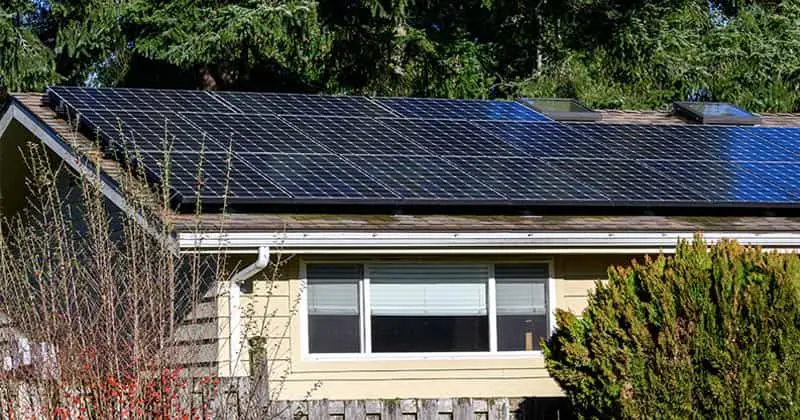Insulating a shipping container is a crucial step in transforming it into a livable space, especially for those embracing the concept of off-grid living. With the increasing popularity of repurposing shipping containers for residential purposes, the question of how to effectively insulate them becomes essential. This article explores various insulation techniques and materials that can be employed to ensure optimal comfort and energy efficiency within a shipping container, ultimately enabling a sustainable and habitable living environment.
Introduction
Insulating a shipping container is a crucial step in transforming it into a livable space. Whether it is for off-grid living, a tiny house, or a storage area, proper insulation is essential to maintain optimal temperature, control moisture, reduce noise, and create a comfortable living environment. In this article, we will explore the types of shipping containers, the importance of insulation, factors to consider before insulating, different insulation materials available, preparation of the shipping container, insulation techniques, sealing and air tightness, and finishing touches to ensure a well-insulated shipping container.
Understanding Shipping Containers
Types of Shipping Containers
Shipping containers come in various sizes and configurations, with the most common being the 20-foot and 40-foot containers. These containers are made of durable steel and are designed to withstand the harsh conditions of shipping and transportation. Other variations include high cube containers, refrigerated containers, and open-top containers, each catering to specific needs and requirements. Before insulating a shipping container, it is important to understand its dimensions and specifications to determine the appropriate insulation materials and techniques.
Properties and Challenges
Shipping containers, while sturdy and robust, present unique properties and challenges when it comes to insulation. The primarily steel construction of containers makes them susceptible to temperature fluctuations, moisture build-up, and noise transmission. To counter these challenges, the insulation process must consider the specific properties of shipping containers, such as their air tightness, condensation potential, and the potential impact on the structural integrity of the container.
Importance of Insulating a Shipping Container
Temperature Control
One of the primary reasons for insulation in a shipping container is temperature control. Without proper insulation, container interiors can become unbearably hot in warm climates and excessively cold in colder regions. Insulating materials help regulate the internal temperature by reducing heat transfer from outside to inside and vice versa. This ensures a comfortable living space while also reducing energy consumption for heating or cooling purposes.
Moisture Control
Moisture control is another significant consideration when insulating a shipping container. Condensation can occur inside the container, leading to mold growth, rotting of materials, and a damp environment. Proper insulation with vapor barriers and moisture-resistant materials helps prevent condensation by acting as a barrier between the outdoor and indoor environments. Additionally, insulation materials with good moisture resistance properties can help protect the container from potential water damage.
Noise Reduction
Shipping containers, being made of steel, are prone to transmitting and amplifying external noises. Insulation plays a crucial role in reducing the noise entering the container, ensuring a peaceful living or working environment. Sound-absorbing insulation materials, combined with proper sealing techniques, can help minimize the impact of external noise and create a more serene atmosphere inside the container.
Factors to Consider Before Insulating
Climate Conditions
Before insulating a shipping container, it is essential to consider the climate conditions of the location where it will be placed. Different climates require different insulation materials and techniques to ensure maximum efficiency. For example, in colder regions, effective insulation with high R-values is necessary to maintain warmth, while in hotter climates, insulation materials with good solar reflectivity and low thermal conductivity are preferred to keep the interior cooler.
Container Usage
The intended use of the shipping container also influences the insulation process. Whether it will be used as a living space, an office, a storage area, or a workshop, each usage requires specific insulation considerations. Living spaces may need more focus on thermal insulation and noise reduction, while workshops or storage areas may prioritize moisture control or fire resistance.
Budgetary Constraints
The budget available for insulation is an important factor to consider. Different insulation materials come with varying costs, installation requirements, and long-term benefits. It is essential to strike a balance between the desired level of insulation and the available budget to achieve cost-effective insulation solutions without compromising on quality or efficiency.
Regulations and Permits
Before initiating the insulation process, it is crucial to research local building codes, regulations, and permit requirements. Some jurisdictions may have specific guidelines for insulating shipping containers, especially if they are intended for residential or commercial purposes. Failure to comply with these regulations can result in penalties or delays in obtaining necessary permits.
Types of Insulation Materials
Fiberglass Insulation
Fiberglass insulation is a widely used insulation material for various applications, including shipping container insulation. It is made from melted glass fibers and is known for its excellent thermal performance. Fiberglass insulation comes in rolls or batts and can be easily installed by cutting it to size and fitting it within the container’s walls, ceilings, and floors. It provides good thermal insulation and sound absorption while being relatively cost-effective.
Spray Foam Insulation
Spray foam insulation is a versatile and efficient method of insulating shipping containers. It is applied as a liquid that expands and solidifies into a foam, conforming to the container’s shape and filling gaps and cavities. Spray foam insulation provides excellent air sealing, thermal insulation, and moisture control. However, it requires professional installation, as it involves specialized equipment and proper safety measures.
Cellulose Insulation
Cellulose insulation is an eco-friendly option for insulating shipping containers. It is made from recycled paper and treated with fire-retardant chemicals. Cellulose insulation is available in loose-fill or blown-in form, which can be applied to the container’s walls and ceilings. It offers good thermal insulation, sound absorption, and moisture control properties. Additionally, it is relatively cost-effective and can be installed without professional assistance.
Reflective Foil Insulation
Reflective foil insulation, also known as radiant barrier insulation, is ideal for controlling heat transfer through radiation. It consists of a layer of reflective material, such as aluminum foil, sandwiched between other insulation materials. Reflective foil insulation is commonly used in warm climates or for reducing radiant heat. It reflects radiant energy, keeping the shipping container cooler by minimizing heat gain.
Preparing the Shipping Container
Cleaning and Decontamination
Before starting the insulation process, it is essential to thoroughly clean and decontaminate the shipping container. Any debris, chemicals, or rust should be removed to ensure a clean and safe environment. Cleaning agents appropriate for the container’s material should be used, along with proper protective gear, to avoid any health hazards.
Structural Repairs
Inspecting and addressing any structural issues is crucial for the longevity and safety of the shipping container. Any damages, such as dents, holes, or weakened areas, should be repaired before insulating. Reinforcing weak spots and ensuring the container’s structural integrity will prevent future problems and ensure a solid foundation for the insulation materials.
Application of Vapor Barriers
Vapor barriers are essential in preventing moisture build-up within the shipping container. They are typically installed on the warm side of the insulation to inhibit the passage of water vapor. Vapor barriers can be in the form of plastic sheeting, foil-faced insulation materials, or specialized vapor barrier membranes. Proper installation and sealing of the vapor barrier are crucial to avoid any potential moisture-related issues.

Insulation Techniques
Installing Insulation Panels
Insulation panels, also known as rigid foam boards, are a popular insulation option for shipping containers. These panels are available in various thicknesses and are made from materials like expanded polystyrene (EPS) or polyisocyanurate (ISO). Insulation panels are placed within the container’s walls, floors, and ceilings, providing excellent thermal insulation and moisture control. They are lightweight, easy to handle, and can be cut to fit the container’s dimensions precisely.
Spray Method
Spray insulation method involves using specialized equipment to apply spray foam insulation directly onto the container’s surfaces. It offers excellent coverage, air sealing, and thermal insulation capabilities. However, it requires professional installation due to the equipment and safety precautions involved. Spray foam insulation can reach areas that may be difficult to access with other insulation materials, ensuring a tightly sealed and well-insulated container.
Blown-In Insulation
Blown-in insulation involves using a blower to disperse loose-fill insulation material into cavities or areas requiring insulation. Loose-fill materials like cellulose or fiberglass are blown into the container’s walls, ceilings, and floors. Blown-in insulation can effectively fill gaps, cracks, and cavities, providing consistent insulation throughout the container. It is a versatile method that can be used with various insulation materials.
Reflective Insulation Installation
Reflective insulation installation involves attaching reflective foil insulation to the container’s walls, ceilings, and floors. Reflective foil insulation is typically combined with other insulation materials to enhance its overall performance. The reflective surface helps deflect radiant heat, keeping the container cooler in hot climates. It can be installed by stapling, gluing, or using adhesive tape, providing a cost-effective and efficient insulation solution.
Sealing and Air Tightness
Sealing Gaps and Cracks
To achieve effective insulation, it is crucial to seal any gaps, cracks, or openings in the shipping container. These can be potential pathways for air leakage, compromising the overall insulation performance. Sealing methods may include caulking, applying sealants, or using expanding foam to fill the gaps. Proper sealing of joints, corners, and edges ensures an airtight container, preventing heat transfer, moisture intrusion, and reducing energy consumption.
Weatherstripping Doors and Windows
Doors and windows are common areas of air leakage in a shipping container. Applying weatherstripping to doors and windows helps create a tight seal, reducing drafts and heat loss/gain. Weatherstrips can be adhesive-backed strips made of materials like rubber, vinyl, or foam. They are installed around the perimeter of doors and windows to block airflow, maintain desired indoor temperatures, and enhance overall insulation efficiency.
Installing Ventilation System
Proper ventilation is necessary to maintain air circulation and prevent moisture build-up within the shipping container. Installing a ventilation system, such as vents or fans, helps control humidity levels, expel stale air, and prevent mold or mildew growth. Ventilation systems can be passive or mechanical, depending on the specific requirements and local building codes. Careful consideration should be given to the size and placement of vents to ensure adequate air exchange without compromising insulation effectiveness.
Finishing Touches
Interior Wall Covering
Once the insulation is installed, interior wall covering is necessary to enhance the appearance and durability of the shipping container. Drywall or plywood panels are commonly used as wall coverings. These materials can be attached directly to the insulation or used in combination with a framing system for added strength. The interior wall covering provides a finished look, protects the insulation, and provides a clean surface for further interior modifications.
Ceiling and Floor Insulation
Similar to the walls, ceilings, and floors of the shipping container also require insulation. Proper insulation materials, such as insulation panels or blown-in insulation, should be used to ensure consistent thermal and sound insulation throughout the container. Additionally, vapor barriers should be installed to prevent any moisture-related issues from affecting the ceilings and floors.
Exterior Insulation and Cladding Options
For enhanced insulation and protection, some container owners choose to insulate the exterior of their shipping containers. Exterior insulation can be achieved by adding a layer of insulation panels or foam boards to the outer surface of the container. This method helps eliminate thermal bridging through the steel walls, resulting in improved insulation performance.
Cladding options such as metal or wood siding can be installed over the exterior insulation, providing additional protection and aesthetic appeal. It is essential to choose cladding materials that are weather-resistant, durable, and compatible with the insulation system. Proper installation techniques should be followed to maintain the integrity of the insulation and cladding layers.
Conclusion
Insulating a shipping container is a multifaceted process that involves understanding the different types of containers, recognizing the importance of insulation in temperature control, moisture control, and noise reduction, considering various factors before insulation, choosing the right insulation materials, preparing the container, applying insulation techniques and sealing, and finishing touches. By following these guidelines and considering each aspect carefully, individuals can transform shipping containers into efficient and comfortable living spaces, offices, or storage areas that meet their specific needs and requirements. Proper insulation ensures a pleasant and sustainable environment while maximizing energy efficiency and enhancing the longevity of the shipping container.




